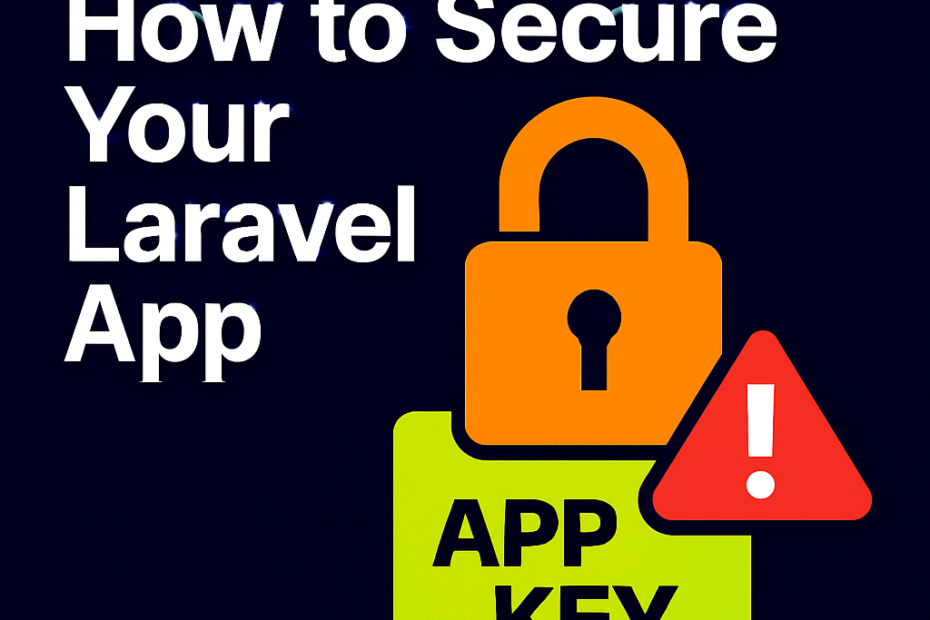Laravel makes it easy to build powerful apps — but with great power comes great responsibility. One of the most overlooked yet critical vulnerabilities is a leaked APP_KEY, which can open the door to remote code execution (RCE), data tampering, and session hijacking.
In this guide, we’ll break down how APP_KEY works, why it matters, and how to bulletproof your Laravel app against this silent threat.
🧠 What Is APP_KEY and Why Is It Dangerous?
The APP_KEY in Laravel is used for:
- Encrypting cookies and session data
- Hashing sensitive values
- Securing password resets and signed URLs
If an attacker gets access to your APP_KEY, they can:
- Forge signed URLs and password reset tokens
- Decrypt cookies and impersonate users
- Potentially execute arbitrary code via unserialization attacks
🚨 Real-World Risk: Remote Code Execution via Crafted Payloads
Laravel uses encrypted cookies and serialized data. If an attacker knows your APP_KEY, they can:
- Craft a malicious payload
- Encrypt it using your key
- Send it as a cookie or request
- Trigger deserialization and execute code
This is especially dangerous if your app unserializes user input or uses vulnerable packages.
🛡️ How to Secure Your Laravel App
1. Never Commit .env Files
Use .gitignore to exclude .env:
# .gitignore
.envIf your .env is public on GitHub, rotate your keys immediately.
2. Rotate APP_KEY Safely
If you suspect a leak:
- Generate a new key:
php artisan key:generate - Re-encrypt sensitive data if needed
- Invalidate sessions and reset tokens
⚠️ Warning: Rotating the key will invalidate encrypted cookies and sessions. Plan downtime or notify users.
3. Use Environment-Specific Keys
Never reuse the same APP_KEY across staging, production, and local environments.
4. Secure Your Server & CI/CD
- Use
.envvaults or secrets managers (e.g., Laravel Vault, AWS Secrets Manager) - Restrict access to
.envfiles via file permissions - Avoid exposing
.envin error messages or debug tools
5. Disable Unnecessary Serialization
Avoid using serialize() or unserialize() on user input. Prefer JSON or Laravel’s built-in casting.
6. Validate Signed URLs Carefully
Use URL::signedRoute() and Route::hasValidSignature() to prevent tampering.
7. Monitor for Leaks
Use tools like:
- GitGuardian for secret scanning
- Laravel Telescope for request inspection
- Fail2Ban or intrusion detection systems
🧪 Bonus: Test Your App’s Exposure
Try this checklist:
- Can you decrypt cookies with a known key?
- Are signed URLs forgeable?
- Is any user input being unserialized?
- Are
.envfiles accessible via misconfigured web servers?
🧭 Final Thoughts
A leaked APP_KEY is like handing over the master key to your app. Laravel gives us powerful encryption tools — but they’re only as strong as our operational discipline.
Secure your keys. Audit your code. And treat .env like a vault, not a config file.
Fuel my creative spark with a virtual coffee! Your support keeps the ideas percolating—grab me a cup at Buy Me a Coffee and let’s keep the magic brewing!
